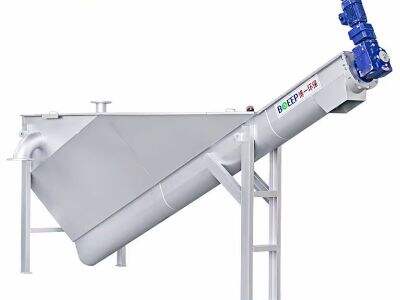Proper equipment needed to treat wastewater can keep the process from becoming difficult and time consuming. In this post, we will review why a grit classifier is a great addition to your pretreatment system and how it can help the overall performance of your wastewater treatment process.
Discover the benefits a grit classifier can provide for optimizing your pretreatment system by filtering out grit and debris.
A grit classifier is a piece of equipment designed to remove sand, slag and other grit from sewage before the water enters the treatment process. Grit and debris can create clogs and cause downstream problems if weeks, months or years are going by without cleaning cycles retire some crafts for repair or replacement issues. Including a grit classifier wastewater treatment in your pretreatment system will help eliminate these abrasive particles and increase the overall efficiency of your wastewater treatment process.
Find out how adding a grit classifier can help your downstream equipment last longer by reducing the abrasive wear and tear caused by gritty particles
The abrasive grit particles can be very aggressive leading to excessive wear and tear of downstream equipment, thus reducing the lifespan of machinery and increasing their maintenance needs. A BOEEP grit classifier helps to skip these particles from fouling, extending the life of your equipment and saving you money by avoiding expensive maintenance.
Discover inexpensive strategies for minimizing operating costs associated with clogs and the abrasion of grit wear in clarifier, flotation along with other types of grit classifier equipment.
When you install a grit classifier, it is helping you avoid these problems to begin with; thus saving both time and expenses later on. A grit classifier is ideal for capturing and getting rid of the grit particles as well as debris in your wastewater, which would otherwise cause clogs and damage and add to maintenance cost.
Learn how grit classifiers can enhance the cleanliness of your wastewater by separating dangerous grit contaminants from influencing the treatment mechanism.
Degrading the quality of your wastewater, thereby causing a problem with treatment and compliance with regulatory requirements. When you add a grit classifier to your grit chamber in wastewater treatment, the type of particles will be eliminated from the wastewater before they can pass into the treatment process of your facility which will lead the cleanliness of water in high-quality and assist you fulfil legal requirements.
Find out how a grit classifier can be the solution to your suspension solids fine solid removal problem with respect to Local Regulatory Requirements for pre-treatment.
In general, suspended solids should be removed from wastewater to ensure that it is adequately treated prior to discharge into the environment and regulations exist concerning this removal. A grit classifier in your pretreatment system will remove suspended solids in your wastewater to a valuable app load standard, ensuring you are not fined or penalized for non compliance. The appropriate degree of suspended solids removal represents by grit classifier to make sure that you meet the current requirements of wastewater treatment.
Table of Contents
- Discover the benefits a grit classifier can provide for optimizing your pretreatment system by filtering out grit and debris.
- Find out how adding a grit classifier can help your downstream equipment last longer by reducing the abrasive wear and tear caused by gritty particles
- Discover inexpensive strategies for minimizing operating costs associated with clogs and the abrasion of grit wear in clarifier, flotation along with other types of grit classifier equipment.
- Learn how grit classifiers can enhance the cleanliness of your wastewater by separating dangerous grit contaminants from influencing the treatment mechanism.
- Find out how a grit classifier can be the solution to your suspension solids fine solid removal problem with respect to Local Regulatory Requirements for pre-treatment.

